“A Thoreauvian at Quarry Farm” (A Quarry Farm Testimonial)
EDITOR’S NOTE: We occasionally feature testimonials from recent Quarry Farm Fellows and Residents, which combine conversational illustrations of their research and writing process with personal reflections on their experiences as Twain scholars, teachers, and fellows. Applications for Quarry Farm Fellowships are due each Winter. Find more information HERE .
- Thomas W. Howard, “Beyond Mental Telegraphy: Twain’s late Psychological Fiction” (July 16, 2025 – The Park Church)
- Thomas W. Howard, “‘Two stories tangled together’: The Double Brain, Pudd’nhead Wilson and Those Extraordinary Twins” (August 6, 2022 – Elmira College Campus)

I think I linger on the study because I’m a Thoreauvian at heart, and it reminds me of Thoreau’s cabin at Walden Pond. Both are remarkably similar structures: a single room, a fireplace, a table, a few chairs, and a place to lie down (a bed for Thoreau, a sofa for Twain). Both were used, at least in part, as writing retreats. And some of the greatest works of American literature—from Thoreau’s Walden to Twain’s Adventures of Huckleberry Finn—were written in these spaces.
In fact, the more one looks at the two writers, the more the similarities mount. Both wrote river-themed texts: Thoreau was finishing A Week on the Concord and Merrimack Rivers during his two-year stay at the cabin, and among Twain’s prolific output in Elmira was Life on the Mississippi. Both were avid travelers, albeit with vastly different scales to their journeys: Thoreau took excursions to Canada, Maine, and the Great Lakes; Twain voyaged to Europe, the Levant, and around the world in 1895. Both men were also personally invested in new literature-adjacent technologies: Thoreau with pencil manufacturing, Twain with book printing and publishing. And both were keenly aware of the social and political issues of their day, appearing in works like Thoreau’s “Resistance to Civil Government” and Twain’s “A True Story, Repeated Word for Word as I Heard It.”
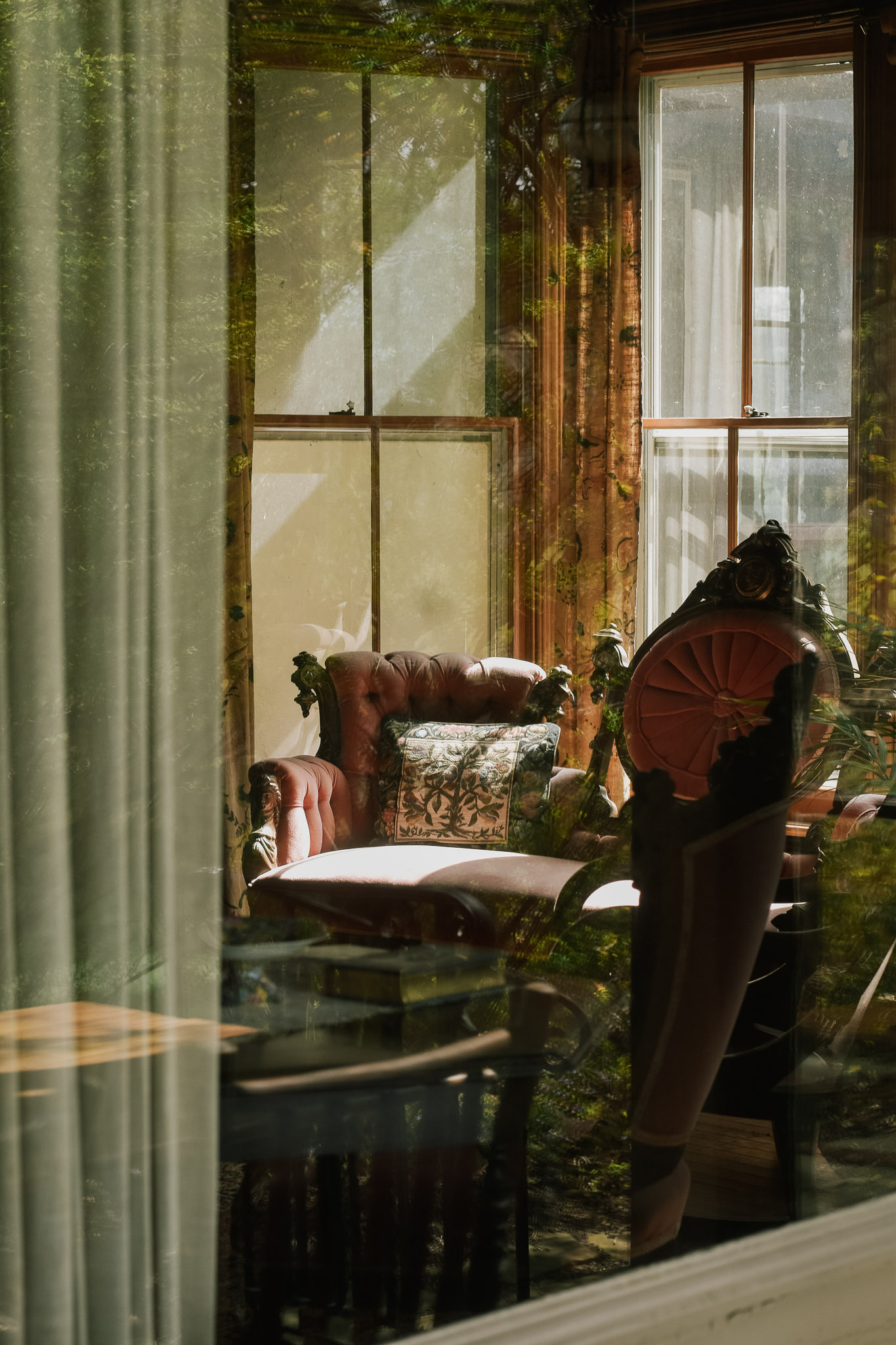
View of the Quarry Farm Parlor from the Porch
“Susie Crane has built the loveliest study for me, you ever saw. It is octagonal, with a peaked roof, each octagon filled with a spacious window, and it sits perched in complete isolation on top of an elevation that commands leagues of valley and city and retreating ranges of distant blue hills. It is a cosy nest, with just room in it for a sofa and a table and three or four chairs—and when the storms sweep down the remote valley and the lightning flashes above the hills beyond, and the rain beats upon the roof over my head, imagine the luxury of it! It stands 500 feet above the valley and 2 1/2 miles from it.”
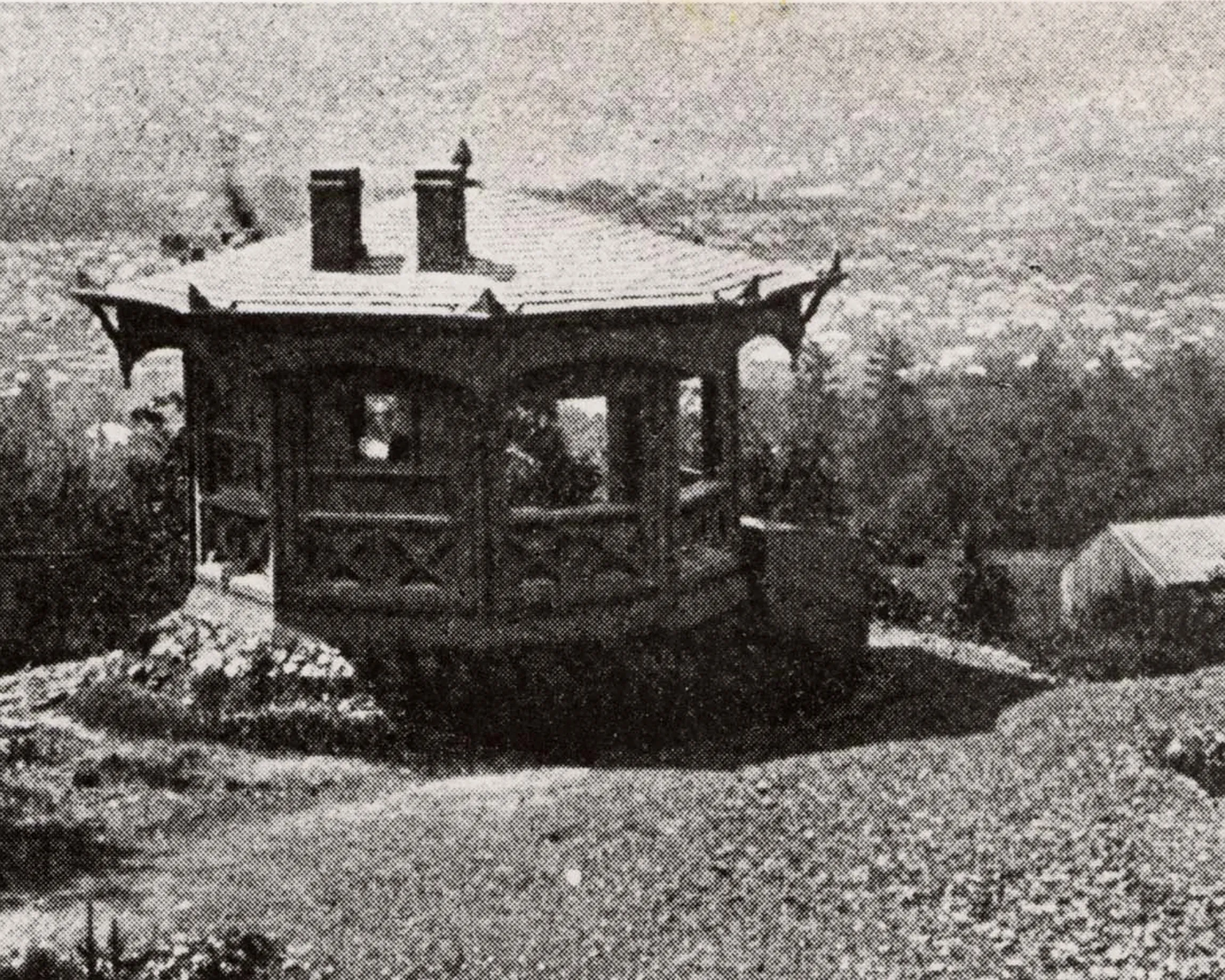
Instead of isolation, perhaps what the study and the cabin afford is a space for community. Though somewhat unintuitive for a writing retreat, such socializing is implied from Twain’s letter, quoted above, when he claims there are “three or four chairs” in the space. Perhaps this is unsurprising for Twain, given that his “study” in his Hartford house was actually the billiard room, but it also carries over to Thoreau. In Walden, he writes:
“I had three chairs in my house; one for solitude, two for friendship, three for society. When visitors came in larger and unexpected numbers there was but the third chair for them all, but they generally economized the room by standing up. It is surprising how many great men and women a small house will contain.”
But again, as with solitude, the house at Quarry Farm provides plenty in the way of potential society. Although the dining room and parlor for display only—“not intended for daily use,” as the guide says—the back porch is full of at least a dozen places to sit. These were well-used during my first time at Quarry Farm, when I participated in a weeklong writing workshop following the 2022 Quadrennial. Our group spent the mornings working on individual projects under the guidance of John Bird, but our lunches were always shared out on the porch. By the late afternoon, we all fell to chatting in those very chairs. Getting to know John and his wife Seung, along with my fellow early-career cohort, was the highlight of that week.
So, if Thoreau’s cabin and Twain’s study primarily offer solitude and society, at different times, then I have had those very things from the house at Quarry Farm. In fact, the more I consider it, the more I find that the house in its current state is something of a deconstructed octagonal study or Thoreauvian cabin. The upstairs is devoted to fellows’ use, with a nice new desk, a few chairs for reading, and even a standing desk, if that’s your thing. The house encourages you to find a space of your own for the solitary writing. In both of my stays, I have gravitated toward the isolation of the upstairs spaces. But when it’s time for socializing, the back porch beckons. Moving around the property, you begin to feel the effects that different environments have on your mental state. I, for instance, can read on the back porch, but I never wrote there.
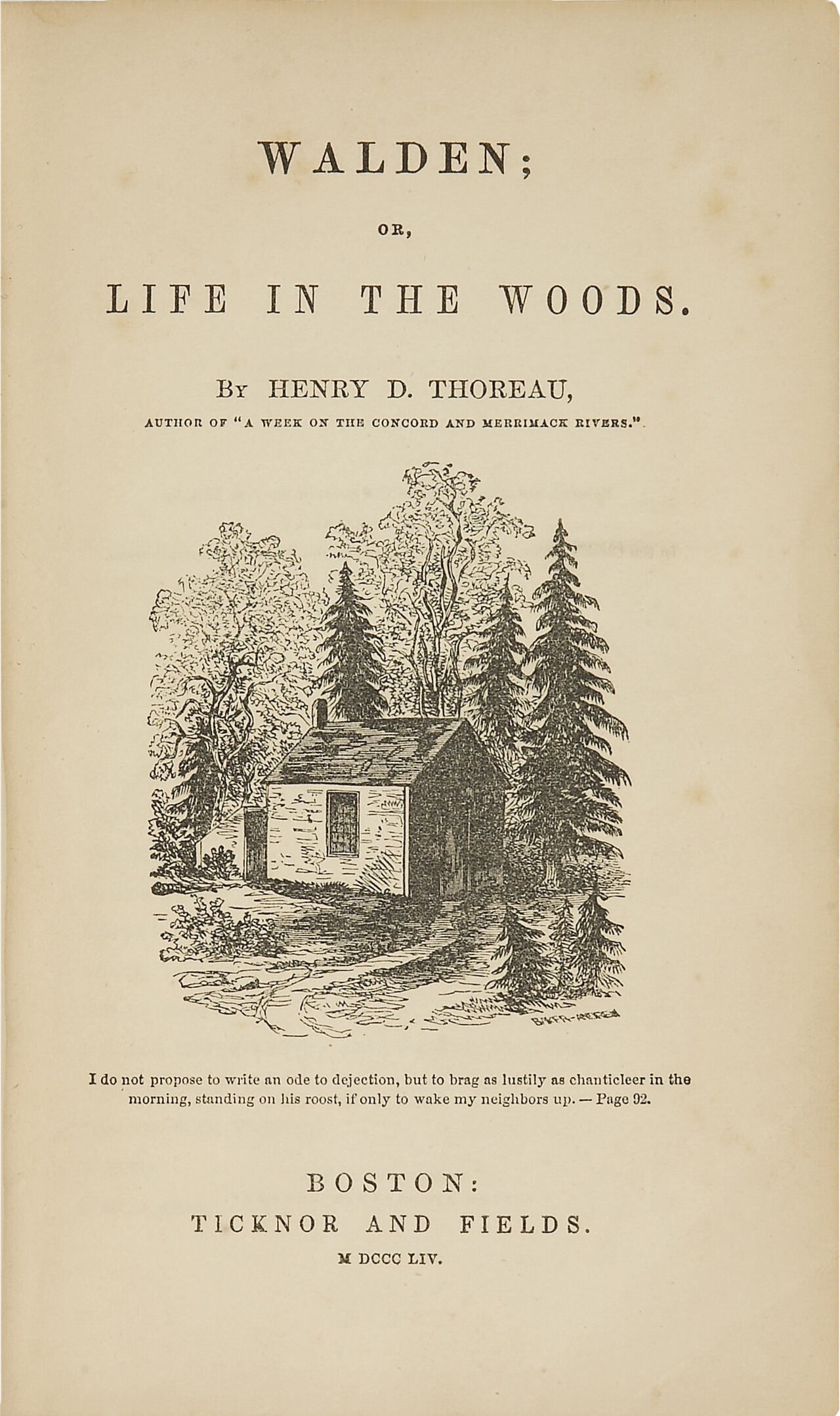
My time at Quarry Farm was exploratory, an experiment. I first read through the Mysterious Stranger manuscripts, of course. Most of my time, however, was spent looking through books in the upstairs library. As an Americanist working abroad in Turkey, I am generally quite limited with access to physical books. Bilkent’s librarians are great, and I can request anything I need through interlibrary loan or purchasing, but this nonetheless requires that I know the specific thing I need. The library at Quarry Farm rather allowed me to browse—literally, to feed on leaves—through texts I had not known before. As we continue moving toward e-books and digital services in university libraries, it is good to remember the value of physical shelves and the serendipitous encounters they enable.
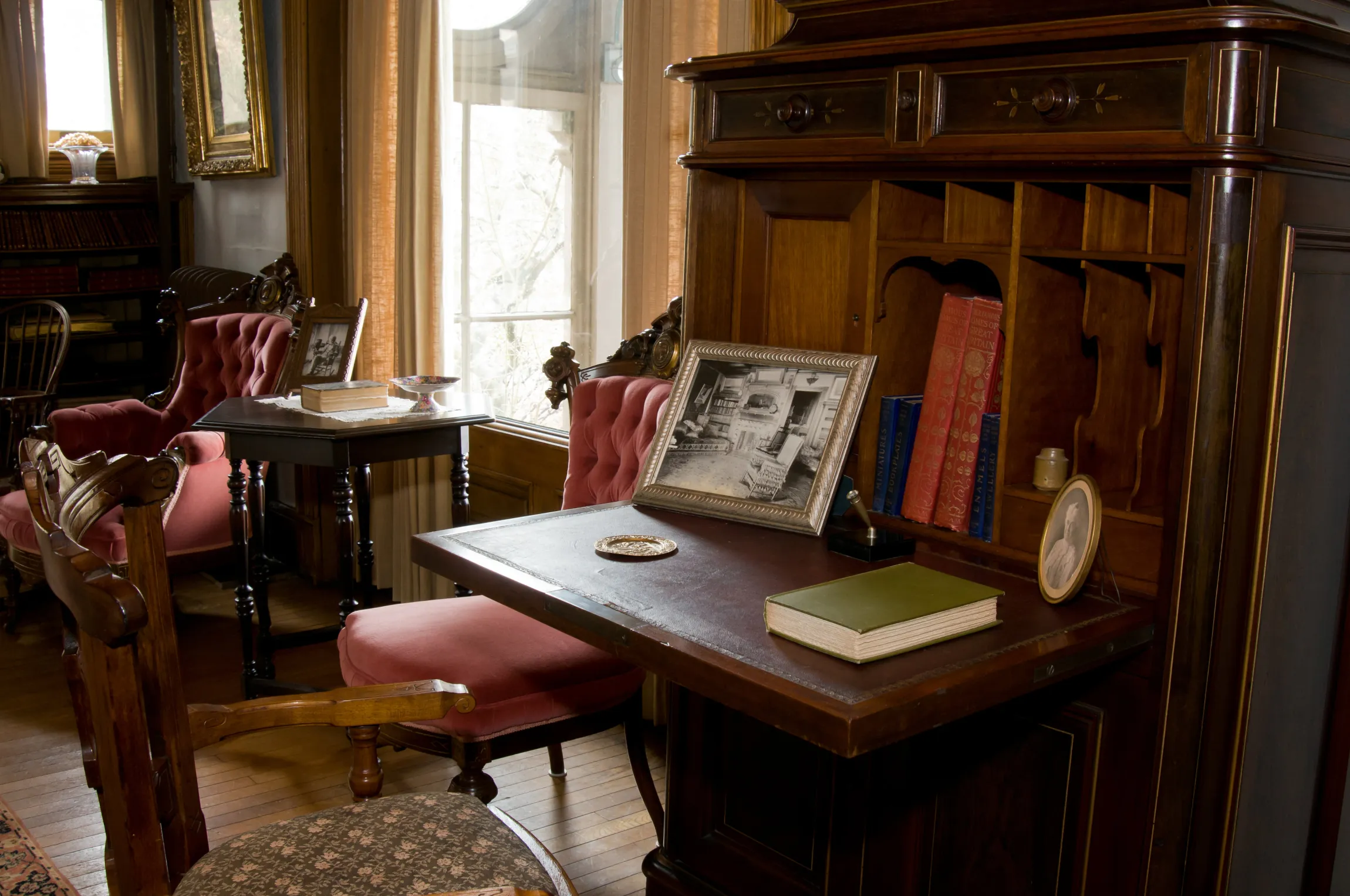
1872 Writing Desk in the Quarry Farm Parlor
I am reminded of the Old Manse: the Emerson ancestral house overlooking the Old North Bridge in Concord. Emerson had written the first draft of Nature in an upper room, using a mobile desk to adjust his position so that he could gaze out of the windows as he wrote. When Nathaniel Hawthorne moved in, he used the same room to write around twenty short stories eventually published as Mosses from an Old Manse. Yet Hawthorne chose an in-built desk for his writing, turning his back on the windows and facing instead a blank, interior wall. And although Thoreau never stayed at the Old Manse, he did plant a vegetable garden for the Hawthornes, and what is a garden if not writing of another sort in a vegetal medium?
In the same way, I’m sure that no two experiences at Quarry Farm are identical, and this is why it is such a special place to work. From the initial excitement of staying where Twain did, to the developing of daily work habits, the space transforms alongside its occupant. And though time there is always temporary, this was also true for Thoreau’s and Twain’s writing retreats. Thoreau never intended to move permanently to Walden Pond, and I imagine Twain would hardly have been as prolific in Elmira if he lived there year round. Rather, these spaces shift your perspective, sparking new ideas that continue to simmer for months or even years to come. The lesson of the absent study is therefore not to recreate it (though that would be nice), but rather to practice the inspiring, experimental mode of thinking that the environment allows. At least, that has always been my experience up on the East Hill.



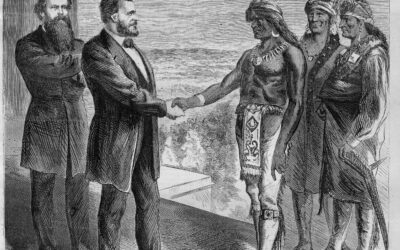
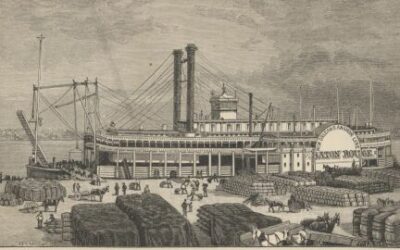
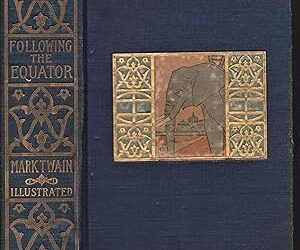
0 Comments